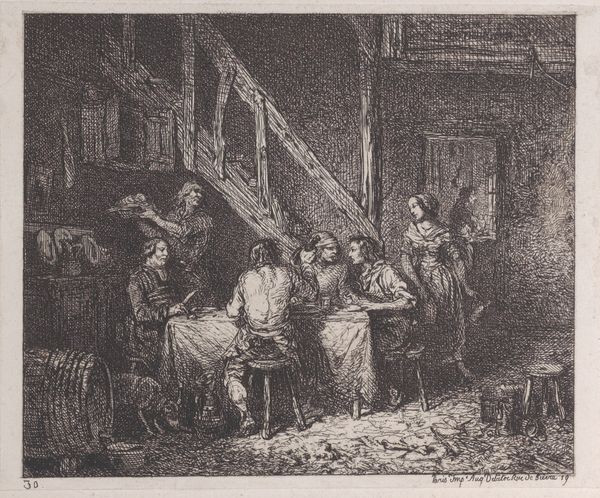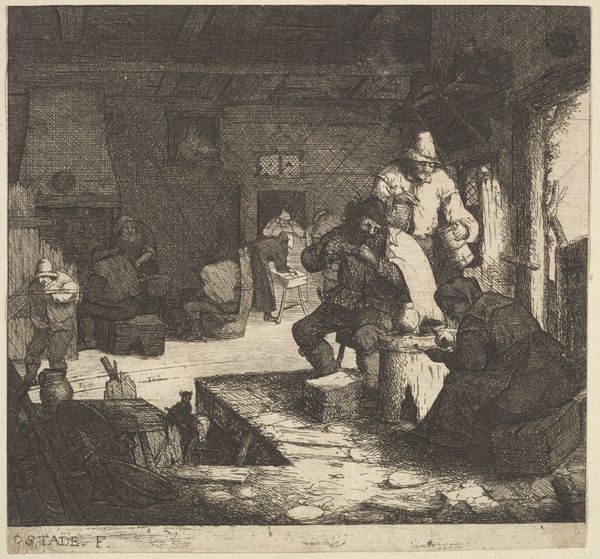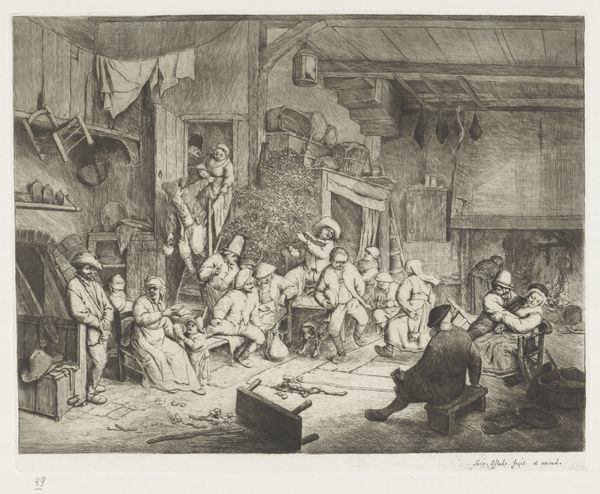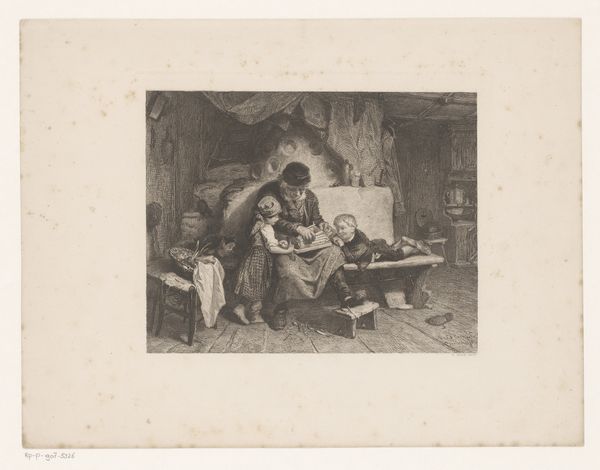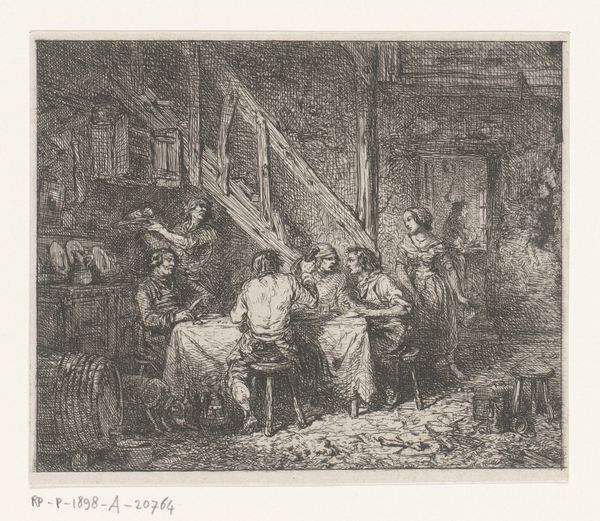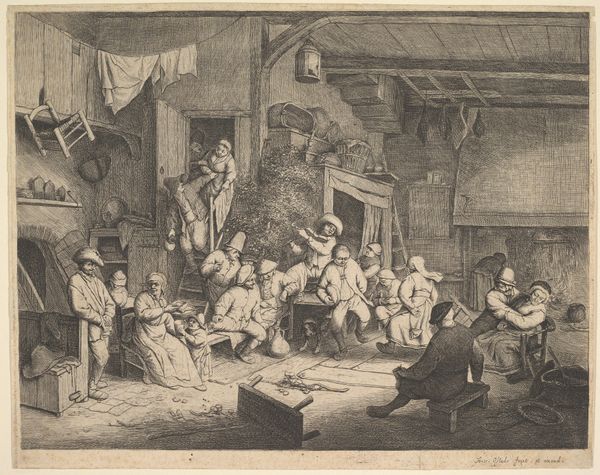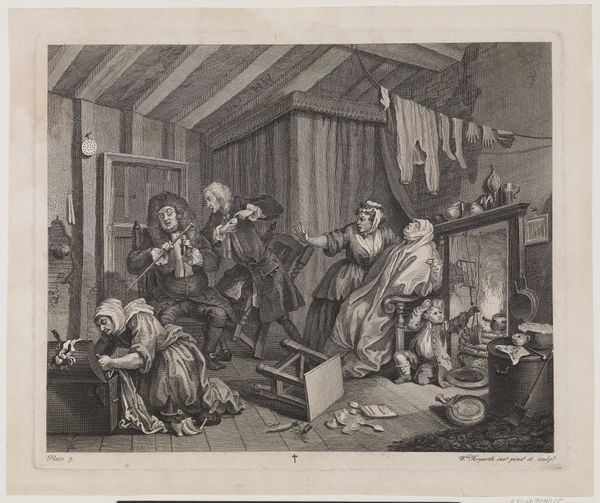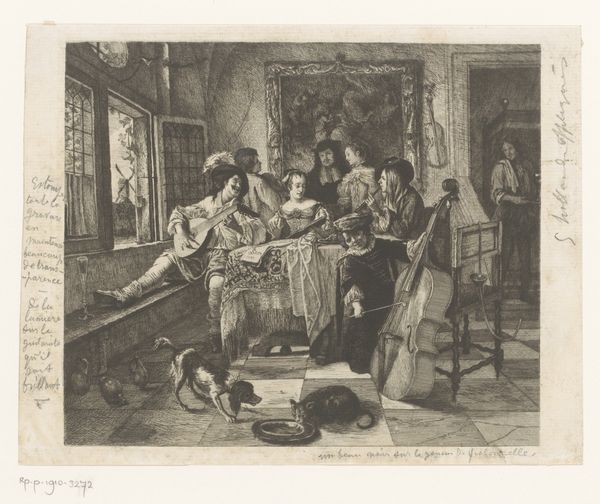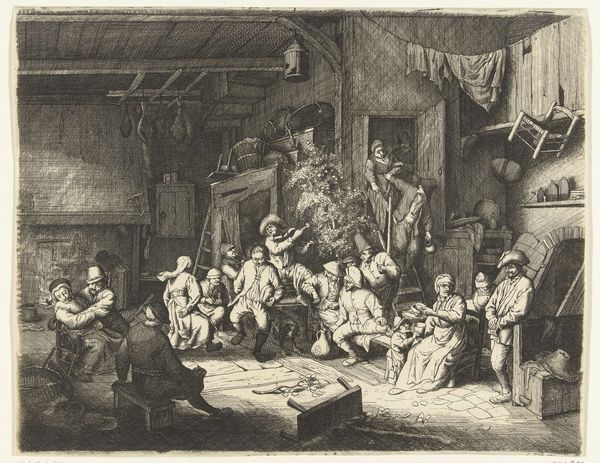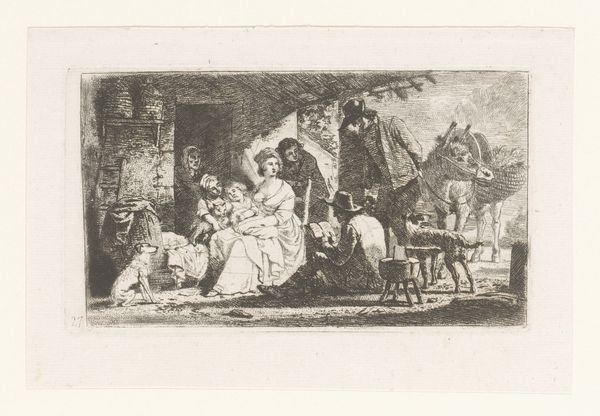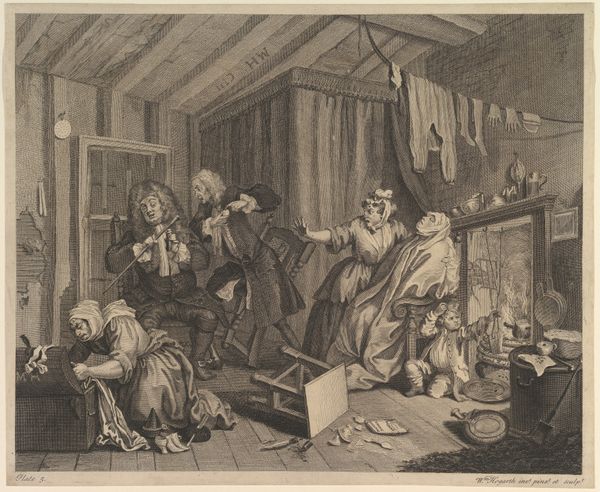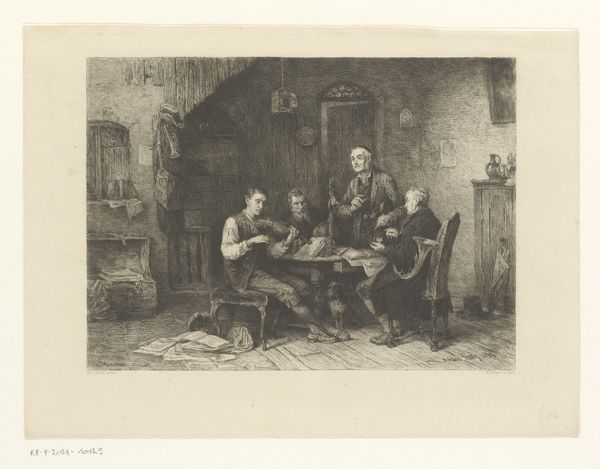
drawing, print, etching
#
drawing
# print
#
etching
#
group-portraits
#
genre-painting
#
history-painting
#
realism
Dimensions: height 223 mm, width 285 mm
Copyright: Rijks Museum: Open Domain
Editor: This etching, "Herbergscène met een groep drinkende jagers" by Edmund Herger, likely made between 1880 and 1888, depicts a tavern scene with drinking hunters. There’s something about the rough texture that really captures the boisterous mood. What stands out to you? Curator: Well, immediately I see a carefully constructed image meant to invoke notions of camaraderie and leisure, but it’s important to consider the social context. Who were these images *for* and what values did they uphold? Think about the rise of leisure culture in the late 19th century; scenes like this idealized a certain lifestyle. How might this image have functioned in the homes of the rising middle class? Editor: So, this wasn't necessarily reflecting reality, but presenting a desired lifestyle? It feels almost like advertising, in a way. Curator: Precisely. Think about the visual language. Note the attention given to detail of the interior of the tavern – animal trophies, the specific dress of the hunters. What might those details communicate to viewers familiar with the traditions of the hunt? Editor: I hadn't considered the details so deeply. It speaks to this almost idealized masculine space. So, you're saying that genre paintings can show us social dynamics? Curator: Absolutely. They serve as artifacts that mirror desires and fantasies about specific social identities or pastimes. How might a contemporary viewer react to such an image versus someone seeing it a century ago? What social values might have changed in the interim? Editor: It's fascinating how much these images are loaded with information. Thanks to this conversation I now look at genre paintings with new eyes. Curator: And that, in essence, is the role of art history – prompting us to critically engage with the visual world.
Comments
No comments
Be the first to comment and join the conversation on the ultimate creative platform.
